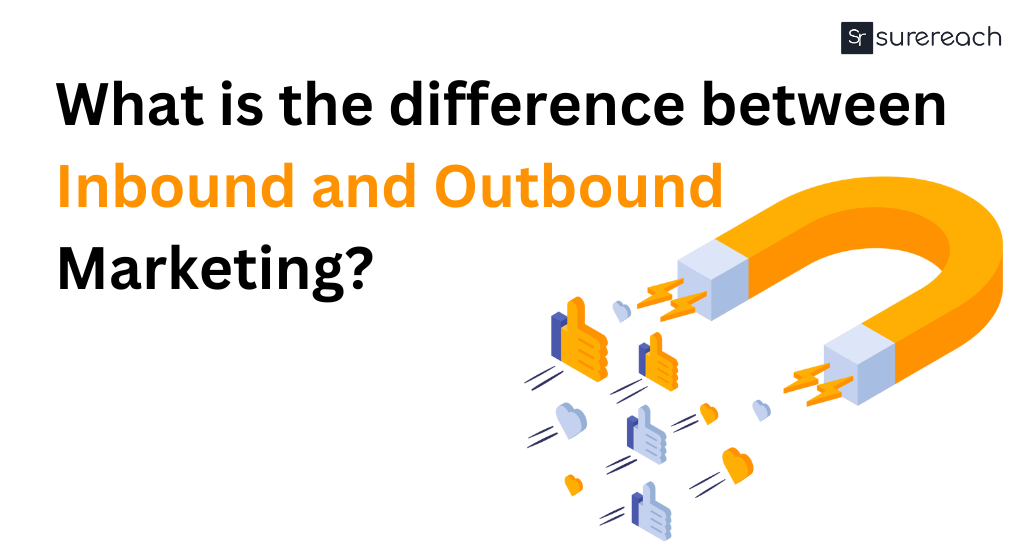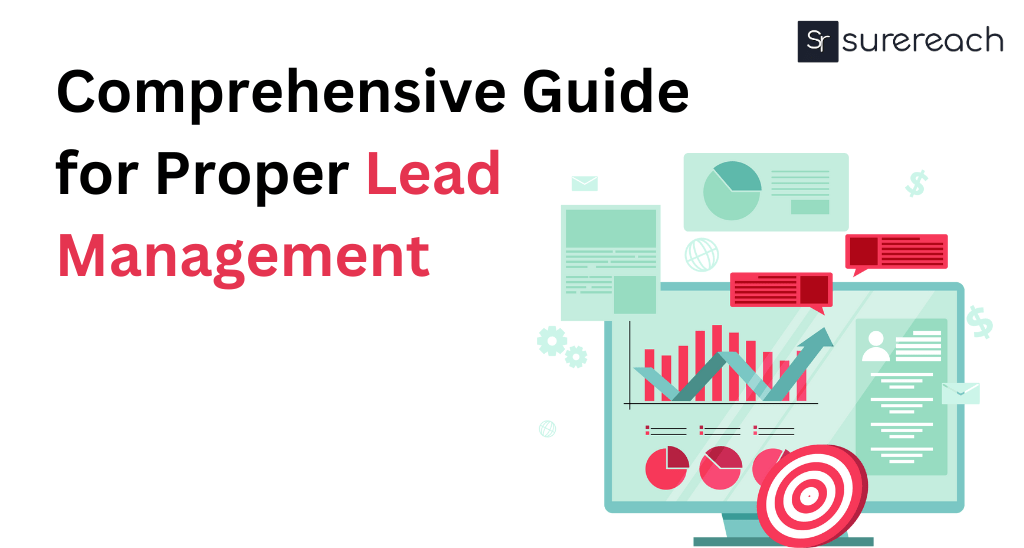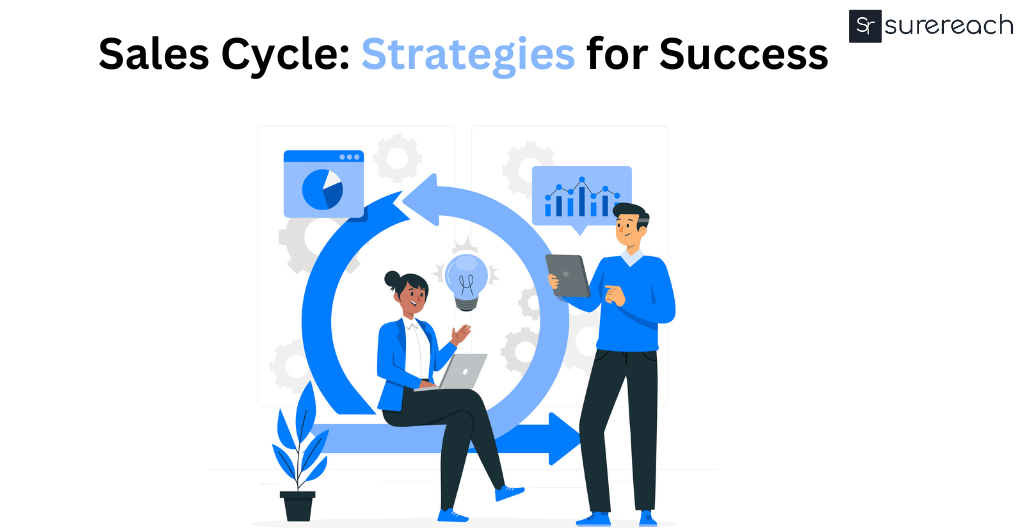One of the most important things to learn in the dynamic and always changing world of business is marketing. Understanding the distinction between inbound and outbound marketing is crucial if you want to build your business and efficiently reach your target audience. Although these two marketing approaches may seem identical at first glance, they really include different approaches, methods, and results.
It’s similar to knowing two separate languages that your target audience speaks when you comprehend the distinctions between inbound and outbound marketing. Each of these marketing strategies has a special method of interacting with your target audience, drawing in new leads, and increasing revenue. Knowing these marketing strategies and their aspects, we can better position ourselves to develop effective, results-driven marketing campaigns that are customized for our particular company.
Inbound Marketing
A company strategy called inbound marketing aims to attract clients by producing insightful information and experiences that are specifically catered to their needs. Rather than using the antiquated techniques of bulk mailings and broad-spectrum advertising, inbound marketing creates relationships with your target audience and addresses issues they are currently facing.
The goal of inbound marketing methods is to draw in new clients and increase your company’s visibility. Among the essential elements of inbound marketing are:
- Content Marketing: In order to draw in prospects, turn them into customers, then turn those customers into recurring customers, content marketing entails producing and disseminating good free material.
- SEO: SEO stands for search engine optimization. When your website appears higher in search results, more people will visit it and are more likely to become leads.
- Social media marketing: It provides a platform for businesses to promote their content and raise their profile while enabling them to interact with their audience.
- Email marketing: Educates potential customers about your company and supports them throughout the buying process.
Outbound Marketing
Traditional marketing, or outbound marketing, is any kind of advertising in which a business approaches a target population and starts a discussion. The antithesis of inbound marketing is outbound marketing, which involves having buyers find you through a variety of sponsored and organic search engine marketing initiatives.
Important elements of direct marketing consist of:
- Ads on television and radio: These conventional media can reach a large audience, but they are expensive to produce and difficult to assess for efficacy.
- Print advertising: It includes advertisements in magazines, newspapers, and billboards. Although they can be somewhat tailored, their reach is frequently rather broad.
- Direct mail: It can be highly targeted, but it can also be costly and frequently receives low response rates.
- Telemarketing: It can be expensive and is frequently seen as invasive, yet it provides for immediate response and is simple to monitor.
Sign up and get 20 credits for free!
We have 3 million+ contacts stored to connect you with prospects all over India
What is Outbound Marketing?
With the goal of closing a deal, outbound marketing targets a sizable audience with a message. This tactic is based on the idea that your message will be more effective the larger the group you message.
Although a lot of people believe that inbound marketing is the way of the future, it’s obvious that digital innovation is changing outbound marketing. One of the most significant outbound strategies, email marketing, is reviving.
Companies may target marketing messages by creating distinct client profiles. They can also send more personalized emails by using richer B2B marketing data, which enhances click-through rates, sales, and return on investment.
Difference between Inbound and Outbound Marketing
Inbound marketing places a strong emphasis on creating a channel of communication that is open to both the audience and the business. This may be seen as a conversation in which users are able to actively participate in exchanging information rather than just passively taking it in. These are some salient points:
- Feedback and Engagement: Businesses may engage directly with their audience through social media platforms and blog comment sections, which can yield priceless feedback.
- Personalization: Businesses may make customers feel more connected by tailoring their messaging depending on the behaviors of a particular audience by utilizing technologies like email marketing software.
- Community Building: Consistent communication with customers may foster the development of a brand community that will boost advocacy and client loyalty.
Outbound marketing, on the other hand, is distinguished by one-way communication. This kind of communication is similar to a monologue in which a company delivers its message without anticipating a direct response. Vital details consist of:
- Mass Messaging: Sending the same message to a big audience without any customization is a common practice in outbound marketing.
- Limited response: Since direct consumer connection is typically absent from outbound initiatives, there are less opportunities to get rapid response.
- Transactional Relationships: Outbound marketing frequently prioritizes closing deals over developing lasting connections, which can make it more challenging to cultivate a devoted following of customers.
Inbound vs Outbound Marketing
The capacity of inbound marketing to generate more high-quality leads at a reduced cost is frequently commended. Because it places a strong focus on producing individualized experiences and meaningful information, inbound marketing frequently produces:
- Increased Conversion Rates: Inbound marketing frequently yields greater conversion rates since it targets consumers who are already interested in your product or service.
- Long-Term Outcomes: Although benefits may not be seen right away, inbound marketing can have long-lasting consequences. Long after it was first published, the material you provide can still be found and interacted with by prospective leads.
- Enhanced Credibility and Trust: By showcasing your knowledge to prospective clients through informative material, you may build credibility and trust.
Even though it’s frequently thought of as archaic, outbound marketing is still useful when done right. Here are a few possible advantages:
- Quick Results: Outbound marketing is better for short-term efforts since it is more direct and comprehensive and may produce results quickly.
- Brand exposure: Outbound marketing contributes to a rise in brand exposure even in the absence of immediate sales.
- Reach a Wide Audience: Outbound marketing could be more successful if your target audience is particularly large or uninterested in digital media.
Conclusion
The most effective marketing plans frequently include many tactics. Rather, it utilizes outbound and inbound marketing in a way that best utilizes their respective advantages.
- Inbound Boosting Outbound: An outbound call to action for a product or service may appear in an inbound blog post. As an alternative, outbound social media material might be utilized to advertise an in-person event.
- External Boosting Inbound: By directing customers to an internet resource (inbound), traditional advertising (outbound) may successfully transform a one-way communication into a conversation.
This is how a mixed marketing approach may give companies a more effective and adaptable strategy that can accomplish a greater variety of goals.
Gaining proficiency in both inbound and outbound sales is crucial for career advancement in the sales industry. You can step up and confidently complete transactions by knowing the process, putting good methods into practice, and using technologies like Surereach.
Take advantage of Surereach’s services, such as Email Finder, Phone Number Finder, and more, right now: the URL https://surereach.io.








Sanidhya Arora
More posts by Sanidhya Arora